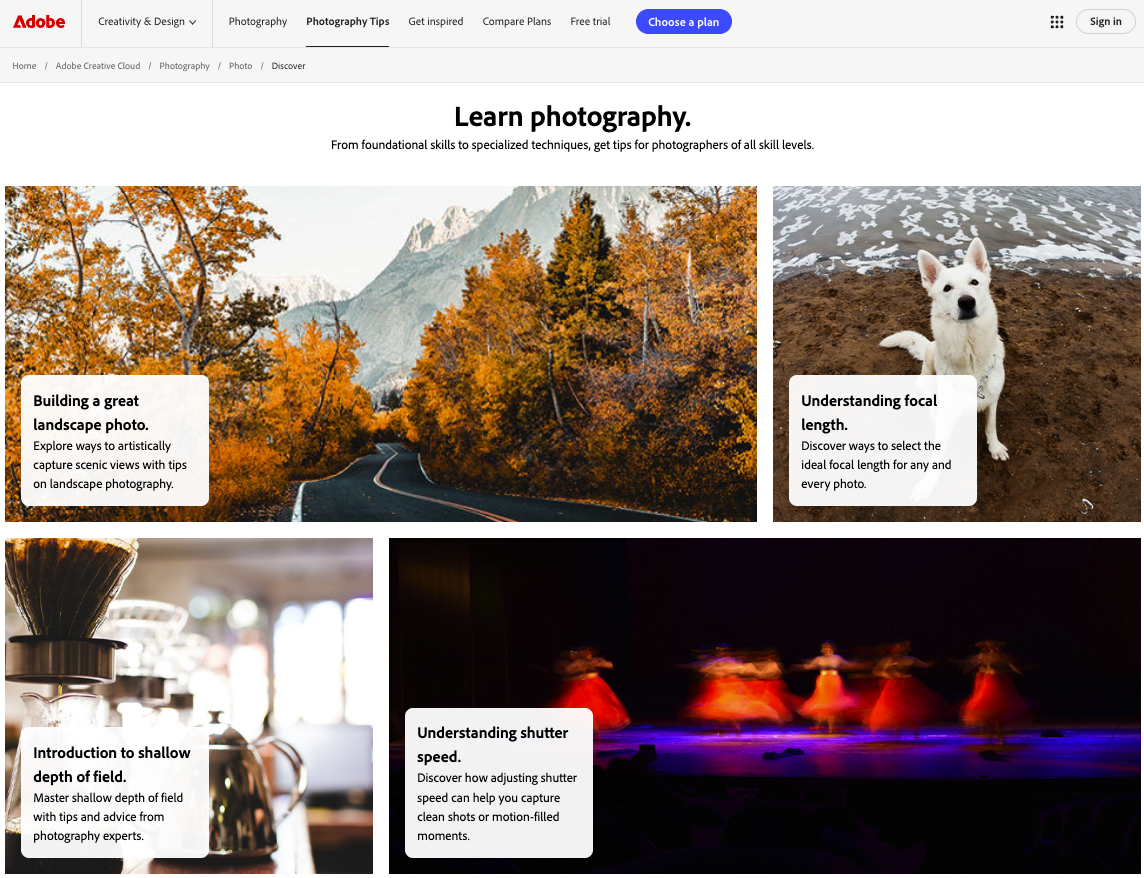The SaaS business model offers incredible scalability as well as profitability – but only when paired with the right marketing growth strategy.
Knowing that the cost of hosting cloud-based applications decreases as user volume increases, SaaS brands must focus on rapid subscriber growth to stay competitive and bring costs down.
Many CMOs default to paid acquisition for predictable traffic and conversions, but I have seen that this approach has a critical flaw: the moment ad spend stops, so does the traffic, causing new customer growth to tank.
Today, there are also longer sales cycles, more choices, and a high customer acquisition cost (CAC). While paid acquisition does play a critical role in pipeline development, it’s not a sustainable long-term growth engine.
To achieve sustainable, long-term growth, SaaS CMOs must look beyond the short-term wins of paid advertising.
Consider SEO as not just another marketing channel, but the foundational strategy that builds organic momentum, lowers CAC, and will compound over time.
I believe that investing in SEO ensures that brands will consistently attract high-intent users, strengthen domain authority, and increase demand generation – without relying on an ever-expanding ad budget.
For CMOs looking to build a resilient growth engine, investing in SEO means ensuring your brand is consistently visible to the right buyers and decision makers, exactly when they’re searching for solutions like yours.
The SEO strategies I list below will improve your overall marketing efforts, whether you market your company using PPC, email, or social media.
With this in mind, I’d like to discuss some of the unique challenges that SaaS CMOs face in the digital space and ways SEO can help them overcome these challenges.
Then, I’ll provide tips to help you improve your online presence and grow your business.
Unique Digital Challenges For SaaS Companies
1. Scaling Growth Efficiently In SaaS
SaaS CMOs and marketers face a tough challenge in scaling SaaS businesses fast enough and to a comfortable degree in order to offset the cost of hosting their cloud applications.
To achieve a lower cost of total ownership (TCO), SaaS companies need to build an effective network scale that:
- Acquires new customers constantly.
- Retains existing ones.
- Entices customers to communicate with one another using the software to build a full-fledged network.
Unfortunately, paid advertising only contributes to the cost of this model and fails to bring on new customers outside of this narrow window of focus.
Not to mention that SaaS companies take different approaches to pricing and monetization, often choosing between freemium, subscription, or usage-based models to align with customer needs.
Expansion revenue plays a key role in growth. Upselling encourages customers to move to higher-tier plans, while cross-selling introduces them to other products or services.
The right combination of these strategies can drive sustainable revenue while keeping customers engaged.
What’s needed for this is an omnichannel marketing strategy that builds awareness organically and through multiple channels.
2. Balancing Customer Support & Self-Service Models
Many SaaS providers use varying business models, including self-service, managed service, and automated service models for customer support.
These models relate to the amount of support the SaaS vendor provides, greatly affecting the cost of managing and running their platforms.
SaaS companies now use AI-driven automation and personalization to enhance customer service. AI-powered chatbots handle routine inquiries, providing instant responses and freeing up support teams for more complex requests.
Personalization at scale ensures that customers receive solutions based on their history, preferences, and behavior, improving satisfaction and retention.
I have seen how SaaS companies integrate AI into customer service. By doing so, they streamline operations, improve response times, and deliver a better support experience.
AI-powered automation can also streamline repetitive tasks like email campaigns, lead scoring, and customer segmentation.
Personalization at scale can improve how your messaging resonates with users and prospects, improving engagement and conversion rates overall.
But if your SaaS platform has a notoriously high learning curve, such as Salesforce, and you use a self-service model for customer support, you may need to invest heavily in educational materials and tutorials to assist customers as they learn about your additional products and services.
3. Maximizing LTV: Acquisition Vs. Retention Focus
While we focus heavily on customer acquisition to grow the network of a SaaS provider, keeping customers on the network is equally important.
Whether you rely on a one-time purchase or a subscription model, constantly iterating with new products, releases, and continual customer support is critical for maintaining steady growth for your business and improving retention through product stickiness and value-driven marketing.
For this reason, SaaS companies need to invest in a wide-range marketing strategy that appeals to new and existing customers in different ways, reducing churn through onboarding, engagement, and proactive support.
4. Protecting & Leveraging Your Brand In Search
Most of your keywords may be branded, which can be difficult to scale if no one is aware of your software or brand.
For this reason, a mix of PPC, link building, and high-level content will be critical to growing your brand’s name and people’s affiliation with your products, along with positioning your brand as an authority in the industry.
5. Aligning SEO With Buyer Journeys & Intent Signals
Finally, when you’re dealing with branded products and multiple keywords, it can be difficult to decipher intent.
As we’ll discuss, strategically optimizing your funnel and content around intent will be important for your overall SEO strategy.
Benefits Of SEO For Sustainable SaaS Growth
Since SaaS companies rely on building economies of scale to reduce costs and increase profit, a long-term strategy like organic SEO makes the most sense for SaaS businesses.
Some of the benefits of SEO for SaaS include:
- Sustainable, Scalable Growth: Building a predictable pipeline of high-intent leads without reliance on paid acquisition.
- Lower Customer Acquisition Costs (CAC): Reducing dependency on expensive PPC campaigns and improving marketing efficiency.
- Stronger Brand Authority & Visibility: Dominating search results, positioning your brand as the go-to solution in your industry.
- Higher Customer Retention & Engagement: Using authoritative content to educate users, improve onboarding, and reduce churn.
- Enhanced Omnichannel Performance: Improving conversion rates across paid, social, and email by aligning messaging with organic search insights.
I want to note that high-value content doesn’t just fuel SEO. It also enhances other channels, providing compelling material for nurturing campaigns, retargeting, and demand generation across paid media and email for both acquisition and retention.
More importantly, SEO isn’t just about ranking – it’s about owning the conversation around your software.
Strengthening brand visibility in organic search ensures that when decision-makers actively seek solutions, your SaaS brand is front and center in the search engines for long-tail searches.
So, by establishing yourself as a thought leader and building a loyal customer base using a mix of content and SEO, you can build out a wide-scale network of users that reduce hosting costs and accelerate your growth.
To get started, let’s discuss seven actionable SEO strategies for CMOs of SaaS brands.
7 Actionable Ways To Scale SaaS Businesses With SEO
1. Lay The SEO Foundation For Scalable Growth
First and foremost, you need to build a user-friendly site where people can download your products, contact customer support, and read content.
Some technical fundamentals your website needs include:
- HTTPS protocol.
- Mobile optimization.
- Fast page speed.
- Optimized images (quality and size).
- Clear web structure.
- A sizeable crawl budget.
- Core Web Vitals.
- An XML sitemap.
- No duplicate content issues.
- Hreflang tags for international or multilingual users.
Many of these technical factors are binary in Google’s eyes – pass or fail – making them non-negotiable table stakes for achieving high-quality search visibility.
Once your SEO foundation is in place, securing top rankings for authoritative content becomes significantly easier, while also ensuring visitors stay engaged and receive value once they arrive.
2. Align SEO Strategy With Customer Insights & Intent
Next, your team should develop a list of buyer personas you will pursue using multiple conversion tools. Input for buyer personas could be based on the following sources:
- Sales and marketing teams.
- Existing analytics sources (e.g., Google Analytics, Google Search Console, or Paid Media Channels).
- Customer service representatives.
- Direct feedback from customer surveys and interviews.
Now, your buyer personas or avatars will differ whether you’re targeting a B2C or B2B space.
In a B2C space, your buyer persona will be based on several demographic and psychographic inputs, including:
- Location.
- Age.
- Interests.
- Occupation.
- Education level.
For example, if you were selling photo editing software, you would likely create separate avatars for professional and freelance photographers and hobbyists.
On the other hand, your B2B persona will likely target specific people in an organization, such as managers, key decision-makers, founders, or daily users.
For example, one marketing campaign and persona may focus on a software solution for sales teams and managers.
At the same time, another campaign in the SEO space may target SEO managers looking to switch from existing products.
Once you have a list of buyer personas and avatars, you can create strategic campaigns with actionable solutions that appeal to these personas on both paid and organic channels.
3. Drive Conversions With Full-Funnel SEO
As a SaaS CMO, you will likely need to create separate content for separate buyer’s personas, but also for new and existing customers.
In terms of acquisition, creating specific content at each stage of your individual sales funnel will increase your chances of conversion.
Awareness
Create awareness that the user has a problem and that your software can solve it. Common marketing materials include:
- Blog posts.
- Guest posts.
- Press releases.
- Boosted social media posts.
- Paid advertisements.
Interest
Build interest in your products and find ways to engage with users.
For example, encouraging users to sign up for your newsletter or email service can be a great way to engage with users over time.
At this stage, you could send emails to users or hit them with a pop-up advertising a free ebook, case studies, testimonials, white paper, or any other high-level content that speaks to your products while encouraging user-generated content and community engagement.
Evaluation/Decision
Engage with users further to push them closer to a conversion. Some common tactics include:
- Free trials.
- Limited consultations.
- Free demos.
- Free beta testing.
Purchase And Loyalty
Once a user has purchased one of your products, continue to engage them with special offers or educational content that improves their user experience and delivers satisfaction.
Hopefully, at this stage, you can generate strong brand loyalty, encouraging word-of-mouth advertising to grow your network.
4. Prioritize High-Impact Keywords For Business Growth
Since the acquisition cost for early-stage SaaS providers is incredibly high, it’s important to curate a strategic organic keyword strategy that brings qualified traffic to your website.
Some strategies to generate high-converting keywords and to use them appropriately include:
- Target a list of your highest-converting PPC keywords.
- Analyze what keywords competitors are bidding on and targeting organically.
- Optimize for informational keywords (e.g., photo editing software: “How to enhance a photo”).
- Leverage “integration” related terms if your software works with other products.
- Focus on benefits (e.g., increase, improvement, automation, etc.).
- List features (e.g., photo editing, red-eye removal, cropping, etc.).
- Segment target keywords by intent across your sales funnel (e.g., informational keywords at the top-of-the-funnel and keywords about features/benefits for mid-funnel content).
- Optimize for lower volume, niche keywords with less competition to carve out market share.
5. Strengthen Domain Authority With Strategic Content Clusters
Once you have a list of keywords and an actionable content strategy for your funnel put in place, it’s time to execute.
Since SaaS products are fairly sophisticated and highly competitive, it’s ideal to follow Google’s E-E-A-T guidelines (experience, expertise, authoritativeness, and trustworthiness) to craft your content.
In addition, I also recommend creating topic clusters around topics with similar content to reinforce the main topic, generate authority, and answer as many user questions as possible.
HubSpot is a good example of a blog and SaaS platform that creates highly sophisticated content clusters around its main products, including blogs and user tutorials.
To create a topic cluster, start with a seed keyword that serves as the main topic, such as “Photography,” and create a series of related topics.
For example, Adobe provides a series of photography tips designed to educate users about and sell their products, such as Photoshop.
 Screenshot from Adobe, March 2025
Screenshot from Adobe, March 2025By creating rich resource content, you can build a community of people who come to your brand, not just for products but also for thoughtful advice.
As a bonus, leverage community forums to further engage and educate users with common troubleshooting concerns with your products.
6. Leverage Backlinks To Boost Credibility & Rankings
While backlinks are still a valuable ranking signal, I view backlinks as a more valuable promotion strategy.
If you follow my content tips above, you will create many linkable assets that naturally accrue backlinks and can be used for promotion to earn more.
For example, white papers, ebooks, surveys, studies, and tutorials are great resources for educating people and helping them cite information for their own research.
However, to gain early exposure and build links to content, follow these actionable tips below:
- Guest post on popular blogs and websites to generate buzz.
- Promote educational content on paid channels, such as Facebook and Google.
- Email educational content to relevant people in your industry to build awareness.
- Contact resource pages for links to your software.
- Conduct roundup interviews with industry professionals.
- Promote surveys and studies through press releases or paid channels.
7. Integrate SEO With Paid, Social & Product-Led Growth
Finally, combine all of these strategies into an omnichannel strategy.
Using a mix of PPC for brand exposure, content to build authority, and organic SEO to scale customer acquisition will provide the best strategy to scale an early-stage SaaS business.
Furthermore, promoting high-level content like a white paper over advertisements, email, social media, and all other channels is a great way to earn exposure, build links, and drive traffic to your site.
Combine your PPC and SEO keyword research to optimize your funnel and create a consistent marketing strategy that nurtures users from awareness to the decision stage.
Bottom Line
SEO and SaaS don’t just sound alike, but they truly do go together!
While paid advertising is essential for early brand visibility, a strong SEO strategy creates a sustainable path to reduce dependency on paid channels and scale your online presence organically.
Investing in SEO for enterprise SaaS brands should drive consistent, high-intent traffic while improving overall marketing efficiency and creating long-term ROI.
More Resources:
- SaaS SEO: A Four-Step Strategy For Growth
- How To Build A SaaS PPC Campaign That’s Built To Last
- 5 Key Enterprise SEO Priorities CMOs Need To Get Right
Featured Image: SergeyBitos/Shutterstock





